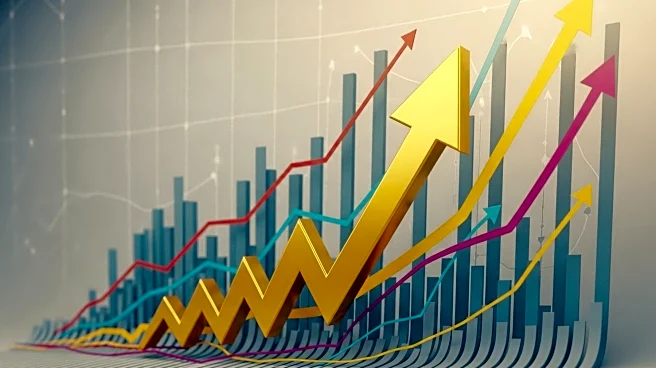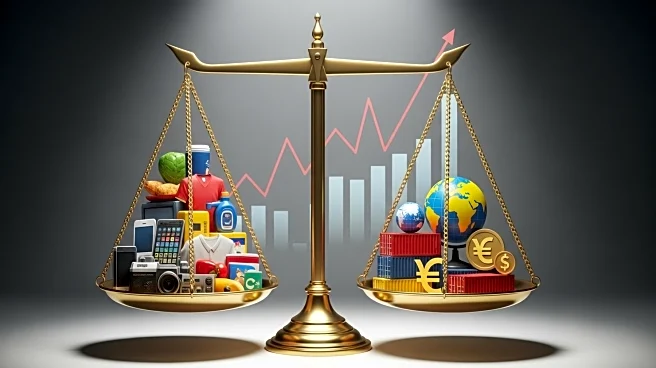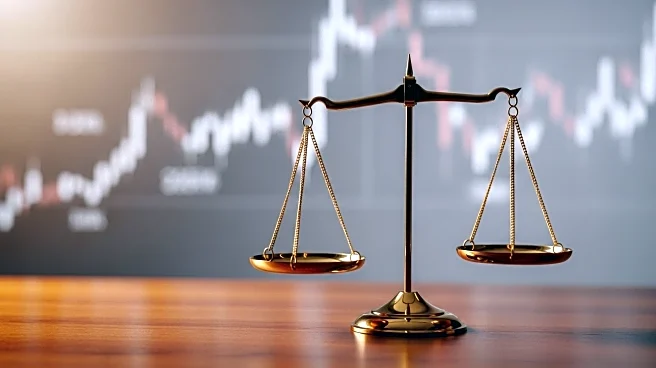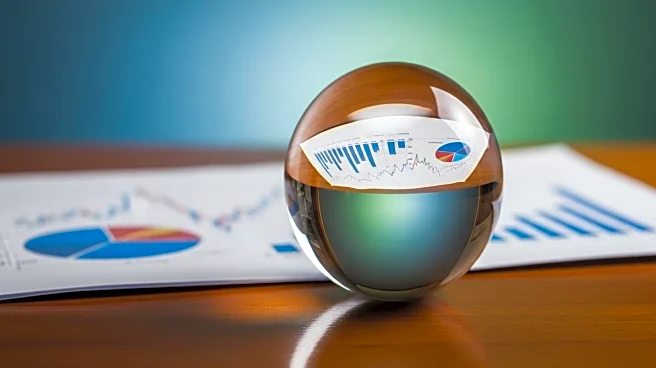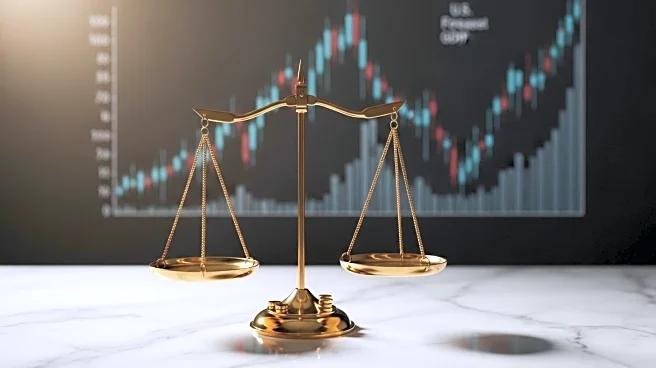What's Happening?
The U.S. economy experienced a notable expansion in the second quarter of 2025, with the gross domestic product (GDP) growing at a rate of 3.8%, according to the Commerce Department. This marks a significant rebound from a 0.6% decline in the first quarter, which was largely attributed to the impact of President Trump's trade policies. The initial estimate for second-quarter growth was 3.3%, but the revised figure reflects stronger consumer spending and a decrease in imports. Consumer spending increased at a 2.5% pace, while imports fell at a 29.3% rate, contributing positively to the GDP. Despite these gains, private investment and federal government spending saw declines, with residential investment dropping by 5.1%. The report highlights the ongoing effects of tariffs imposed by President Trump, aimed at protecting American industries and offsetting tax cuts.
Why It's Important?
The unexpected growth in GDP underscores the resilience of the U.S. economy amid trade uncertainties and fluctuating consumer behavior. The increase in consumer spending suggests a robust domestic market, which is crucial for economic stability. However, the decline in private investment and federal spending raises concerns about long-term growth prospects. The tariffs, while intended to bolster domestic industries, have introduced volatility and uncertainty, affecting hiring and investment decisions. The Federal Reserve's recent interest rate cut, aimed at stimulating the job market, may face challenges if GDP growth continues to exceed expectations. The interplay between trade policies and economic indicators will be critical in shaping future fiscal and monetary strategies.
What's Next?
The Commerce Department is set to release its initial estimate for third-quarter GDP growth on October 30, with current forecasts predicting a slowdown to a 1.5% annual pace. The Federal Reserve will closely monitor inflation indicators, particularly the personal consumption expenditures (PCE) price index, to assess the need for further interest rate adjustments. The ongoing trade policy developments and their impact on consumer prices and business investments will be pivotal in determining economic trajectories. Stakeholders, including policymakers and industry leaders, will need to navigate these complexities to sustain growth and mitigate potential downturns.
Beyond the Headlines
The broader implications of the current economic trends include potential shifts in global trade dynamics and domestic manufacturing strategies. The tariffs, while protective, may lead to inefficiencies and increased costs for U.S. companies, affecting competitiveness. Additionally, the unpredictability of trade policy changes could deter foreign investment and complicate international relations. The evolving economic landscape may also influence public sentiment and political discourse, particularly as stakeholders assess the balance between protectionism and free trade.


